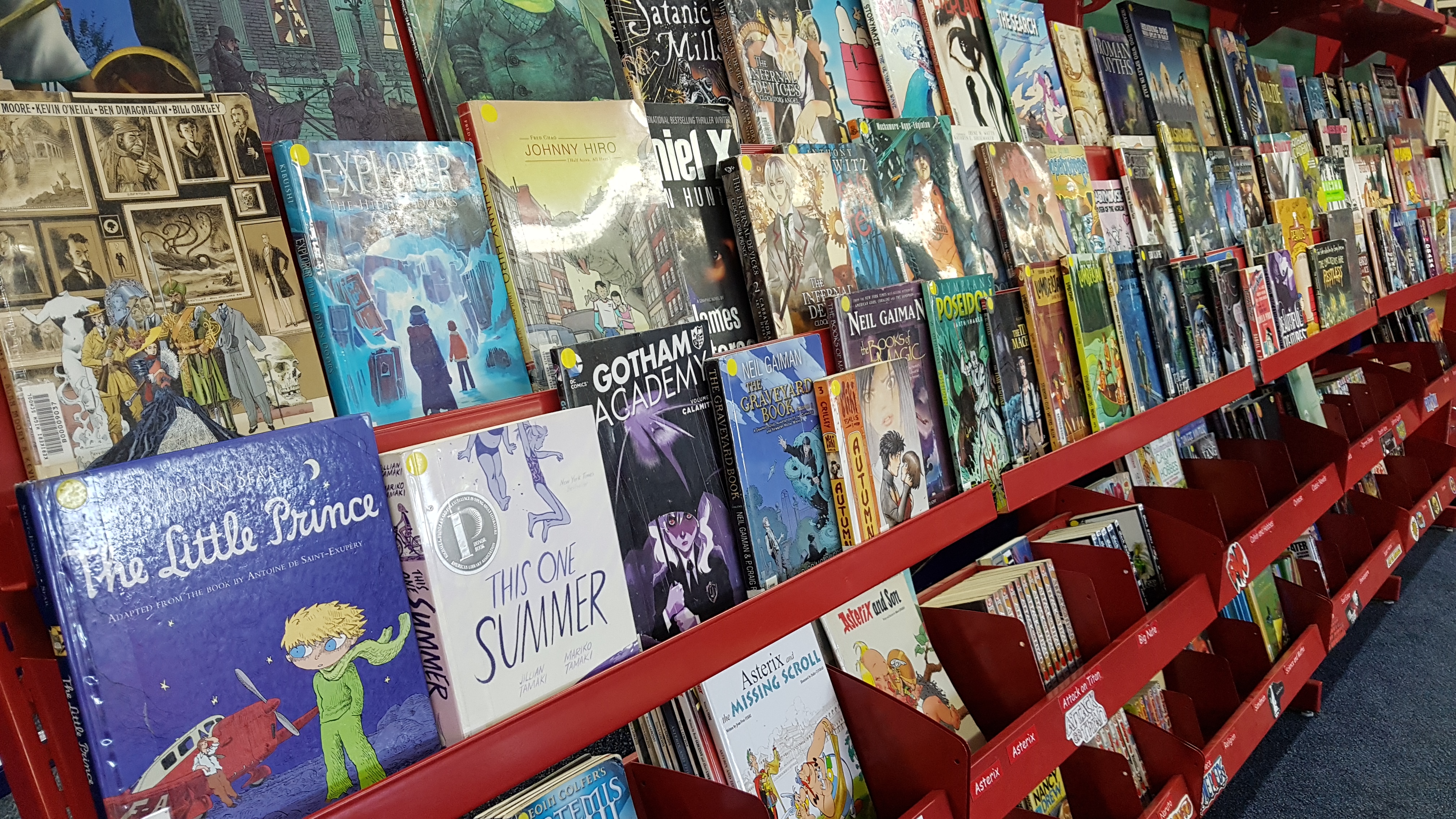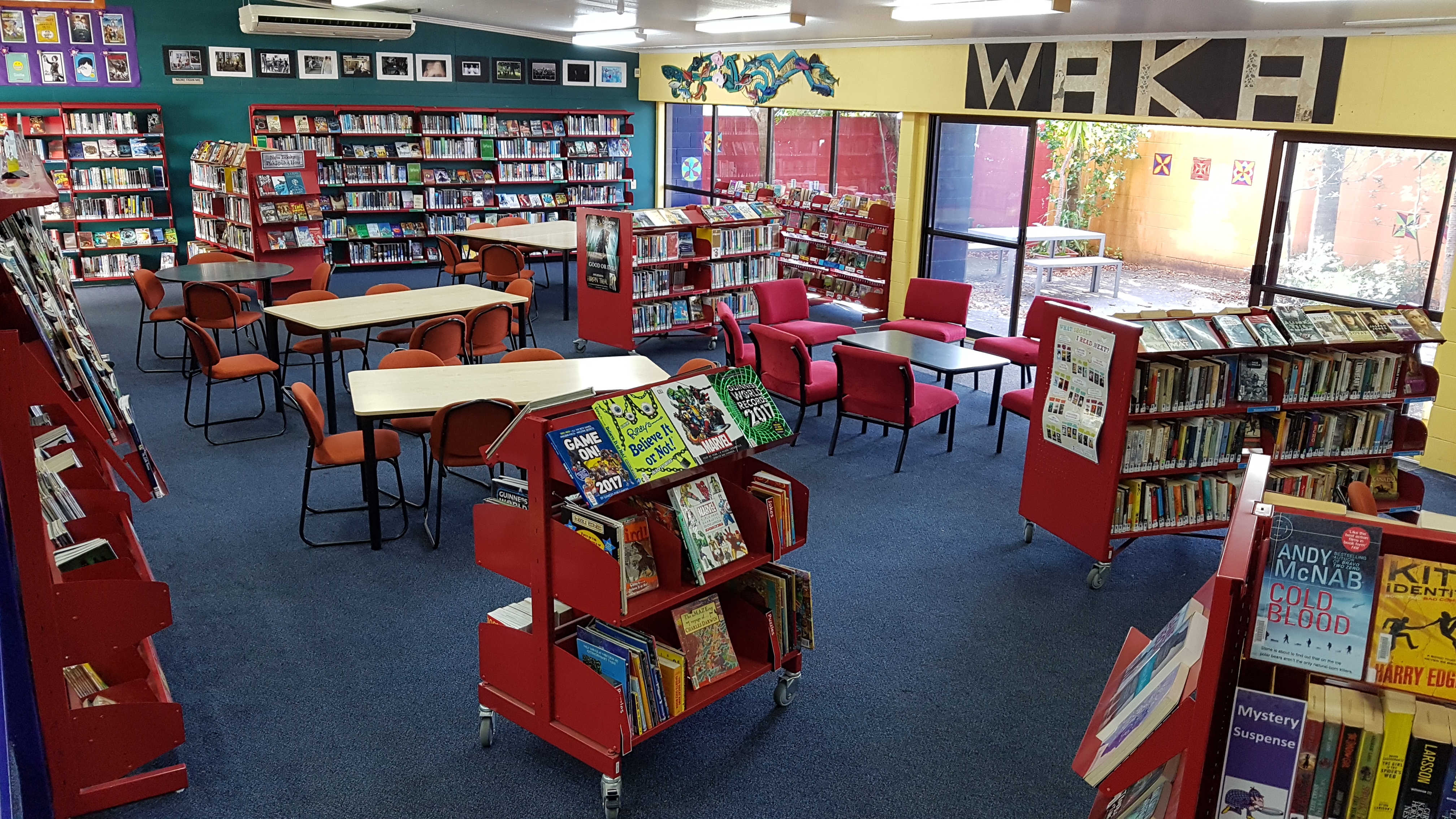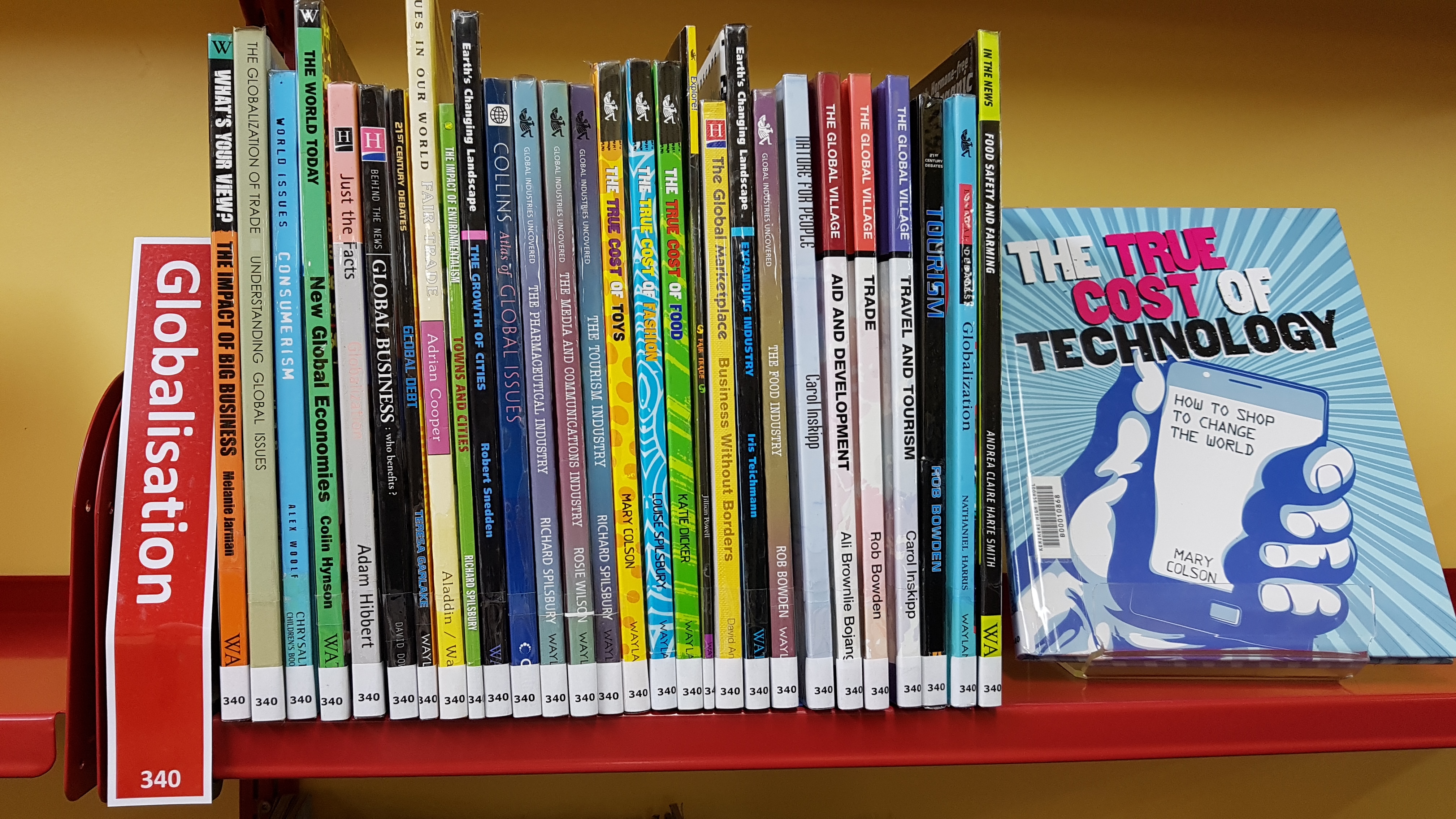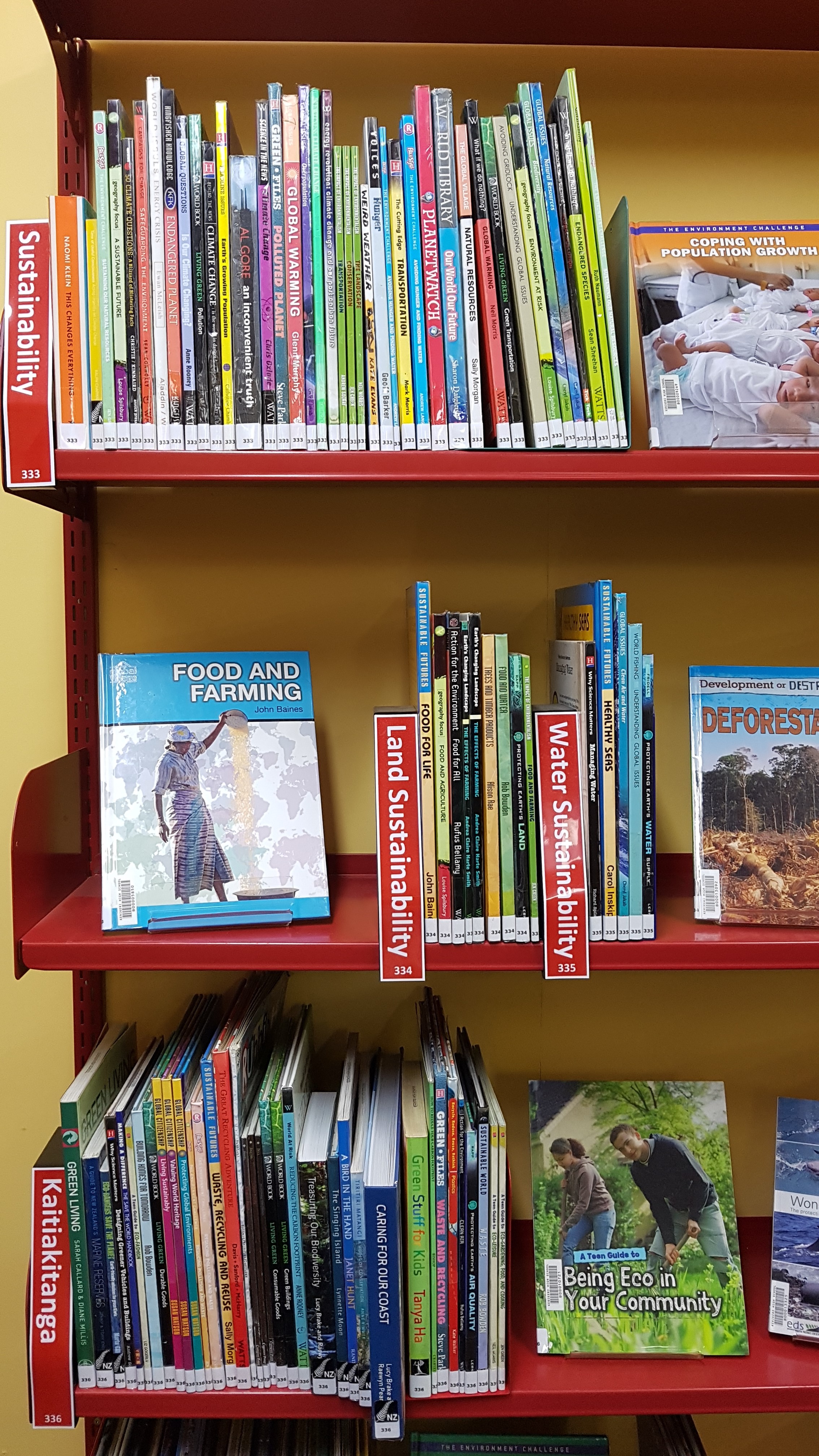New Zealand’s school librarians are passionate, engaged professionals who know how to get students of all ages and reading levels into reading. This, by Julia Smith from Kerikeri High School is the third in our series.
I am a qualified librarian working at Kerikeri High School, a Year 7-13 secondary school of 1,500 students in the Bay of Islands. I graduated from the Open Polytechnic in 2010 with a BAppSci in Information and Library Studies, about the same time as securing this full time job.

One of my roles as school librarian is to instil a love of reading in my students. To achieve this, I must be an enthusiastic, passionate and encouraging advocate, a voracious reader who knows and reads our collection. I need to proactively build a relationship with my students so they trust me as the literacy expert and are comfortable coming to me for help or advice, or to discuss books or suggest titles to buy.
I enjoy the challenge of finding the right book for students, always seek opportunities for one-on-one chats with both readers and non-readers, ascertain their interests then choose a selection of books for them, entice them with book talks, and hope that one will make a real connection. Success is when a non-reader returns to the library and says, “Miss, can you find me another book just like the last one?
The library is a popular space for student creativity, reading, learning and socialising. I open at 8:00am and will have fifty students by 8:15am, over one hundred by 8:30am. Intervals and lunchtime are often packed. We can accommodate up to three classes at one time – it is unusual to find a free period. Without doubt, the library is an integral part of our school’s learning achievement.
Reading is empowering
‘Literacy is humankind’s greatest invention – the ultimate form of human empowerment.’ – Pam Allyn
It is essential that our students be empowered by reading. Reading equips students by giving them real-life scenarios, like exploration of families, friendships, relationships, sexualities and identities, experiences teenagers are going through daily. By mirroring their lives, they can see they are not alone, they can learn the outcomes of choices in the safety between the pages. By showing them windows into the wider world, they build understanding, empathy, social and cultural awareness. Books are the weapons to arm children and teenagers with life skills. Therefore, students need to be surrounded in books, flooded with choice. Literature that entertains, challenges, informs, transforms. My role is to encourage them to read more, to borrow more, either physical or digital books. The library has a no-limit borrowing practice, with students self-regulating their lending needs. I believe if I limit access to books then I immediately lose reading opportunities. Not only do I need to gain the trust of my students, I must also trust them in their reading journey. Librarians know that children and teenagers read at different levels. I buy books for our collection for eight-year-olds through to adults. Only in rare and extreme cases of content do I limit the borrowing to Year 10 and above. My students deserve access to a diverse range of viewpoints to foster critical thinking; if they are not ready for some of the ideas and content expressed in the book they have chosen, they will skip pages or return the book. Therefore, another factor in my philosophy around children’s literature; let them choose, let them read, let them learn, trust your readers.

A Flexible Space
No day is typical in the school library and that makes the position so interesting and challenging. Throughout the day, my prime role is to support student’s learning through encouraging reading and promoting effective research practices. Classes may require my expertise for a number of things: EPIC databases, information and digital literacies, print and digital resources to support curriculum topics, eLibrary, book talks, reading promotion lessons, or selecting fiction books. Despite the booking sheet for classes, the library needs to be a flexible space for students to be able to access information as the need arises, and I have a flow of students throughout the day who may require help as well. Between times, I may be collaborating with teachers on upcoming topics to assess both our print and digital collection and buy and/or curate resources to support that learning. Other work includes maintaining social media, Instagram and the library blog, selecting and ordering books, weeding out others, assisting student librarians, organising activities for Kids’ Lit Quiz, planning and implementing displays, promotions and library events.
I am very fortunate that senior leadership recognises the inherent value of the school library and I manage a healthy budget. Likewise, the library benefits enormously from a part-time assistant librarian who handles all the cataloguing, labelling and covering of books, as well as running the Library Environment Team and their activities.
Library Organisation
Three years ago we genrefied our fiction collection into ten genres plus comics. The students love it. For those who like to browse they can find the type of book they like to read so much easier.

Last year, I started questioning what our students actually need in a library classification system, and why our system of choice, Dewey, makes things so complicated for them. As a result, I am reorganising the nonfiction. Not genrefying, not Dewey-free, rather a creative, flexible use of Dewey divisions, reorganising and reclassifying to make it more accessible for students and staff. It is about uncomplicating the classification system, shelving like books together, responding to curriculum topic areas, and providing a simplified, yet sensible and easier system for students and staff to locate their information. If you want to know more about this, I am presenting a session entitled ‘Shaking Dewey Down: Reorganising and Reclassifying Nonfiction’ at the 2017 SLANZA Conference in Auckland in July – come join me.
Reading Promotion
My most successful promotion is my library Instagram account, @kkhslibrary. Instagram is the social media platform that so many of my students are on; consequently, the library needs a presence there as well. It is fun, easy (compared to a blog post), with a wide reach. Currently, we have 457 followers, and I am not suggesting that they are all students, but a fair percentage of them are. Instagram has been a marvellous way to connect students with the library, encouraging, promoting and sharing the world of reading to teens – new books, quotes, students in the library, cartoons, magazines, Instagram challenges, movies, reviews, library events, anything bookish to celebrate literature and entice them to read.
Professional Librarian Organisations
My library qualifications gave me the knowledge to manage a library, developed my confidence as well as a thirst to continue learning. Being a member of SLANZA (School Library Association of New Zealand Aotearoa) has added another dimension to that professionalism. By supporting a national organisation for school librarians I have benefitted from a wealth of professional development opportunities – conferences, Connected free online learning modules, Collected online magazine, Google+ community discussions, regional meetings – gaining inspiration, expertise, and connections with a professional network of colleagues around the country.
I have been involved with SLANZA in the Te Tai Tokerau region for many years, becoming Chairperson in 2013, joined the National Executive in 2014, and am currently the co-President elect of SLANZA. I am immensely proud of what SLANZA stands for and has achieved for school libraries and library staff. In my present role, I wish to continue strengthening our national organisation, building a professional voice, supporting and promoting the critical role of school libraries in New Zealand schools.

More New Zealand fiction with Māori protagonists
We need more New Zealand fiction books with realistic Kiwi kids and teenagers, especially featuring Māori protagonists. The books I am selecting for the library need to reflect the students in our community, as when they see themselves in stories it engenders pride in their identity.
In non-fiction, we would appreciate New Zealand sport books on motocross, mountain biking, hunting, surfing and sailing – actually, any individual sport books for teenagers.
Favourite Books
I adore verse novels – the free verse poetry with its succinct language and clever wordplay. I have found that they work really well for reluctant readers; fewer words with a lot of white space on each page, plus they tend to be a fast read. My favourite verse novel authors are Kwame Alexander (The Crossover, Booked), Thanhha Lai (Inside Out and Back Again), Sarah Crossan (The Weight of Water, One), and Ellen Hopkins (Crank, Rumble).
Best book read this year: The Hate U Give by Angie Thomas. Brilliant. Important. Powerful. Unforgettable.
Julia Smith
Julia lives with her husband, dog and chickens on their mandarin orchard north of Kerikeri, their three children are all adults and spread around the world. She is a vegan, loves travelling, reading, walking, biking, sea kayaking, photography and warm sand between her toes; is a bit greeny, a bit techy and a bit healthy.
Favourite Writers: Jane Austen, John Boyne, John Steinbeck, JK Rowling
Favourite Books: To Kill a Mockingbird, The Hobbit, Pride and Prejudice
Favourite Literary Heroine: Jane Eyre
Fictional Boyfriend: Aragorn (The Lord of the Rings)
Fictional Best Friends: Hermione Granger, Sam Gamgee, Hobbes (Calvin & Hobbes)
Favourite Love Story: Pride and Prejudice



